
 |
|
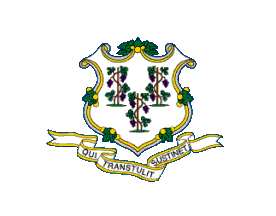













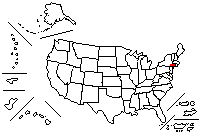
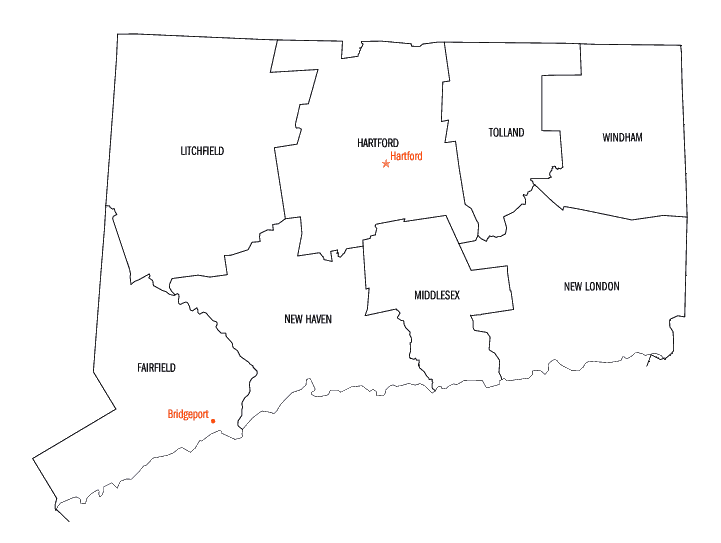

Father and I went down to camp,
Along with Captain Gooding;
And there we saw the men and boys,
As thick as hasty pudding.
Yankee doodle, keep it up,
Yankee doodle dandy;
Mind the musie and the step,
And with the girls be handy.
There was Captain Washington
Upon a slapping stallion,
A-giving orders to his men,
I guess there was a million.
And then the feathers on his hat,
They looked so' tarnal fin-a,
I wanted pockily to get
To give to my Jemima.
And then we saw a swamping gun,
Large as a log of maple;
Upon a deuced little cart,
A load for father's cattle.
And every time they shoot it off,
It takes a horn of powder;
It makes a noise like father's gun,
Only a nation louder.
I went as nigh to one myself,
As' Siah's underpinning;
And father went as nigh agin,
I thought the deuce was in him.
We saw a little barrel, too,
The heads were made of leather;
They knocked upon it with little clubs,
And called the folks together.
And there they'd fife away like fun,
And play on cornstalk fiddles,
And some had ribbons red as blood,
All bound around their middles.
The troopers, too, would gallop up
And fire right in our faces;
It scared me almost to death
To see them run such races.
Uncle Sam came there to change
Some pancakes and some onions,
For' lasses cake to carry home
To give his wife and young ones.
But I can't tell half I see
They kept up such a smother;
So I took my hat off, made a bow,
And scampered home to mother.
Cousin Simon grew so bold,
I thought he would have cocked it;
It scared me so I streaked it off,
And hung by father's pocket.
And there I saw a pumpkin shell,
As big as mother's basin;
And every time they touched it off,
They scampered like the nation.
Yankee doodle, keep it up,
Yankee doodle dandy;
Mind the music and the step,
And with the girls be handy

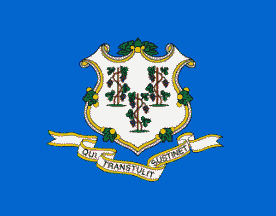

Cunnecticut
Capital City: Hartford
Admission to Statehood: January 9, 1788
Border States: Massachusetts - New York - Rhode Island
Motto: Qui transtulit sustinet -
He who transplanted still sustains
This motto, dating back to the early colonial
history of Connecticut, was part of the colonial seal that depicted a vineyard.
The words are adapted from the Book of Psalms 79:3.
National: Cunnectican, Yankee
Nickname: Constitution State
Origin of state's name: Named by the USA citizanes. Based on Mohican and Algonquin Indian words for a "place beside
a long river".
Cunnecticut (se pronuncia Con-néc-ti-cut en inglés y español)
Ciudad Capital: Hartford (se pronuncia Járt-ford en inglés y español)
Admición como estado: 9 de enero de 1788
Lema: Qui transtulit sustinet - Quien nos transplantó aún nos sostiene.
Este lema data
del principio colonial de Conneticut, fué parte del sello colonial que representa un
viñedo. Las palabras son una adaptación del Libro de los Salmos 79:3.
Gentilicio: Cunnectiqueño, Yankii
Estados limítrofes: Massachusetts - New York - Rhode Island
Cognomento: Estado de la Constitución
Origen del Nombre del Estado: Nombre dado por ciudadanos americanos. Basado en las palabras indias Mohican y Algonquin
que se utilizaba para decir "Un lugar al lado del rio Largo".

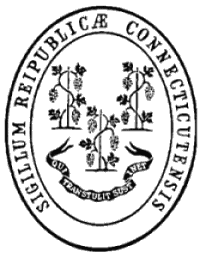
The Connecticut State Seal has changed over the years, but it still has similarities to some of the older versions of the state’s seals. The original seal had 15 grapevines on it and the motto “Sustinet Qui Transtulit” (He Who Transplanted Still Sustains). That seal was carried over to this country from England in 1639. The words “Sigillum Coloniae Connecticensis” (Seal of the Connecticut Colony) were added as the seal underwent revisions in later years. After the Revolutionary War, as Connecticut gained statehood, the legend was changed to “Sigillum Reipublicae Connecticutensis” (Seal of Republic of Connecticut). The motto “Sustinet Qui Transtulit” remains the same as on the original. And some of those grape vines that were a prominent feature of the older seals made it to the current seal (three are on the present one). El Sello del Estado de Connecticut ha cambiado al pasar los años, pero sigue con siendo similar con algunas versiones anteriores. El sello original tanía 15 enredaderas de uvas y con el lema “Sustinet Qui Transtulit” (Quien nos transplantó aún nos sostiene). Ese sello fué traido a este país desde Inglaterra en el 1639. Las palabras “Sigillum Coloniae Connecticensis” (Sello de la Colonia de Connecticut) fueron añadidos y fué sometido a revisiones años después. Después de la guerra de independencia, Connecticut ganó la estadidas, la leyenda fué cambiada a “Sigillum Reipublicae Connecticutensis” (Sello de la República de Connecticut). El lema “Sustinet Qui Transtulit” permaneció sin cambios. Y algunos de los enredaderas de uvas que fueron sus más prominentes rasgos de los antiguos sellos están en el sello actual (ahora son tres enredadera de uvas en el sello actual

History
The state of Connecticut, in New England, is a vital part of the
industrial and transportation corridor of the northeastern United
States. One of the smallest U.S. states, it is bordered by
Massachusetts on the north, Rhode Island on the east, Long
Island Sound (an arm of the Atlantic Ocean) on the south,
and New York on the west. Within its borders there is a rich
variety of cultural and natural environments--the population is
more ethnically diverse than homogeneous, and the physical landscape
is one of broad river valleys, sandy and rocky coastline, and thickly
forested uplands. The peacefulness of seaside marshes and villages
and high-technology industrial parks stands in sharp contrast to
the brisk activity of heavy manufacturing along the coast.
Hartford, an inland city on the Connecticut River, is the capital.
The name Connecticut is derived from the Algonquian Indian word
quinnehtukqut, meaning "beside the long tidal river."
When, early in the 17th century, the first Europeans arrived in
present-day Connecticut, the area was sparsely inhabited by about
20,000 Algonquian-speaking Indians, most of whom lived along the
coast. Among Connecticut Indians were the Pequot, who lived near
the Thames River, and the closely related Mohegan (written about
by James Fenimore Cooper in The Last of the Mohicans); the Niantic;
the Quinnipiac; and the Wangunk. Adriaen Block, a Dutch navigator,
discovered the Connecticut River in 1614 and claimed the region for
the Dutch. A small Dutch trading fort, named the House of Hope, was
built in 1633 near the site of modern Hartford, but it was soon
abandoned. Meanwhile, English settlers from the Plymouth Colony
and the Massachusetts Bay Colony established outlying settlements
at Wethersfield, Saybrook, Windsor, and other places. The Pequot
Indians tried to prevent the whites from settling, but they were
soundly defeated in the Pequot War (1637).
The settlements of Hartford, Wethersfield, and Windsor joined
together to form the Connecticut Colony, which adopted (1639)
the Fundamental Orders, a constitution based on democratic principles.
In 1662, John Winthrop, Jr., governor of the Connecticut Colony
(see Winthrop, family), obtained a royal charter that gave the colony
considerable self-government and control of New Haven Colony.
The latter reluctantly agreed to unite with the Connecticut
Colony in 1665. Between 1685 and 1689, James II attempted to organize
New England under one government; Connecticut, however, resisted and
refused to turn over its charter. Colonists are believed to have
hidden (1687) the document in an oak tree in Hartford, now referred
to as the Charter Oak.
By the early 18th century, Connecticut farmers were producing
agricultural products for export to the other American colonies,
and the coastal towns carried on an extensive trade with the West
Indies and provided food for sugarcane plantations there. Connecticut
also became known for its clocks, silverware, tinware, and
shipbuilding.
By the 1770s the state had a population of nearly 200,000, most
of whom favored independence from Great Britain. During the American
Revolution, about 30,000 troops joined the Continental Army,
and large amounts of food and provisions were contributed. Nathan
Hale, from Connecticut, was hanged by the British in 1776 as a spy.
A few battles were fought in Connecticut, among them skirmishes
at Danbury (1777), New Haven (1779), and New London (1781).
Representatives from Connecticut played an important role at the
Constitutional Convention of 1787, especially in promoting the
so-called Connecticut Compromise, which helped to establish the
present method of apportioning representation in the U.S. Congress.
On Jan. 19, 1788, Connecticut became the fifth state to ratify the
U.S. Constitution. Most of the state's residents opposed the War of
1812, and New England representatives who opposed the war met at
the Hartford Convention in 1814-15.
During the first half of the 19th century, Connecticut's economy
grew considerably, with manufacturing overtaking agriculture by
mid-century. The state was known for its textiles (including silk),
brass products, clocks, firearms (notably the repeating revolver
manufactured in Hartford by Samuel Colt), shipbuilding, and rubber
products. Commerce, shipping, and insurance were also important.
Most residents of Connecticut opposed slavery, which was abolished
in the state in 1848. During the Civil War the state sent about 55,000
men to the Union army and supplied blankets, firearms, ammunition,
and numerous ships. Industry in Connecticut continued to expand after
the war; meanwhile, its cities grew as immigrants arrived from Europe
and Canada, many of them around the turn of the century.
Numerous industries were founded during World War I, when Connecticut
was a major producer of war materials, especially munitions. A U.S.
naval installation (now a submarine base) was established at Groton
in 1917.
The economy suffered a slump immediately after the war,
however, recovering somewhat in the 1920s. The Depression of the
1930s seriously affected the state. Industrial output declined
markedly, and the unemployment rate rose considerably. Some social
welfare legislation (including minimum-wage and
unemployment-compensation laws) was passed during the administration
(1931-39) of Gov. Wilbur L. Cross. The economy revived again during
World War II, when submarines, aircraft engines, ball bearings,
firearms, and other items crucial to the U.S. war effort were produced.
Despite relative prosperity in the postwar period, some of
Connecticut's older cities declined as manufacturers closed their
factories or moved to other parts of the country. Resulting social
problems related to crime and poverty afflicted the bigger urban
centers. In the 1990s thousands of jobs were lost in defense,
insurance, and other industries as the state continued to adjust
to the characteristics of a postindustrial society. Nonetheless,
Connecticut's per-capita income has remained among the highest
in the United States. A state income tax, first adopted in 1971
and soon repealed, was adopted again in 1991.
Cuando, a principio de 17mo siglo, los primeros europeos llegaron en
Connecticut actual, el área estaba habitada por cerca de 20.000
indios Algonquian, la mayoría de quién vivió a
lo largo de la costa. Entre Connecticut los indios eran el Pequot,
que vivió cerca del río de Thames, y el Mohegan de cerca relacionado
(escrito alrededor por el fabricante de vinos de James Fenimore en el
último del Mohicans); el Niantic; el Quinnipiac; y el Wangunk. El
bloque de Adriaen, un navegador holandés, descubrió el río de
Connecticut en 1614 y demandó la región Holanda. Una
fortaleza pequeña, LLamada La Casa de la
Esperanza, fué construida en 1633 cerca del sitio de Hartford moderna,
pero pronto fue abandonada. Mientras tanto, los colonos ingleses de
la colonia de Plymouth y de la colonia de la bahía de Massachusetts
establecieron establecimientos periféricos en Wethersfield, Saybrook,
Windsor, y otros lugares. Los indios de Pequot intentaron evitar que
los blancos se establecieran, pero fueron fuertemente derrotados
en la guerra de
Pequot (1637). Los establecimientos de Hartford, de Wethersfield, y
de Windsor se unieron para formar a la colonia de Connecticut,
que adoptó (1639) las órdenes fundamentales, una constitución
basada en principios democráticos. En 1662, Juan Winthrop, Jr.,
gobernador de la colonia de Connecticut,
obtuvo una carta real que dio a la colonia el gobierno autónomo y el
control considerables de la colonia de New Haven. Un acuerdo más adelante
New Haven se une a Connecticut.
Colonia en 1665. Entre 1685 y 1689, James II procuró organizar Nueva
Inglaterra bajo un gobierno; Connecticut, sin embargo, resistió y
rechazó cambiar sus estatutos. Creen que los colonos ocultaron
(1687)
el documento en un árbol del roble en Hartford, ahora designada el
roble de la carta. Por el décimo octavo siglo, los
granjeros de Connecticut producían los productos agrícolas para la
exportación a las otras colonias americanas, y las ciudades costeras
continuaron un comercio extenso con Indias del oeste y con tal que
alimento para las plantaciones de la caña de azúcar allí.
Connecticut también se conocía por sus relojes, cubiertos, artículos de
estaño, y
construcción naval. Por el 1770s el estado tenía una población de
casi 200.000, la mayoría de quién favoreció independencia de gran
Gran Bretaña. Durante la revolución americana, cerca de 30.000
tropas formaron parte ejército continental, y contribuyeron
con grandes cantidades
de alimento y las provisiones . Nathan
Hale fué colgado por los Británicos acusado de espía. Algunas
batallas fueron luchadas en Connecticut, entre ellos las escaramuzas
en Danbury (1777), New Haven (1779), y New London (1781). Los
representantes de Connecticut desempeñaron un papel importante en la
convención constitucional de 1787, especialmente en promover el
compromiso supuesto de Connecticut, que ayudó a establecer el actual
método de dividir la representación en el congreso de ESTADOS
UNIDOS. El 19 de enero de 1788, Connecticut se convirtió el quinto
estado para ratificar la constitución de ESTADOS UNIDOS. La mayoría
de los residentes del estado que se opusieron la guerra de 1812, y los
representantes de Nueva Inglaterra que opusieron la guerra
satisficieron en la convención de Hartford en 1814-15. Durante la
primera mitad del diecinueveavo siglo, la economía de Connecticut
creció considerablemente, con agricultura que alcanzaba de la
fabricación por mediados de siglo. El estado era sabido para sus
textiles (incluyendo seda ), los productos de cobre amarillo, los
relojes, los armas de fuego (notablemente el revólver de repetición
fabricado en Hartford por Samuel Colt), la construcción naval, y los
productos de goma. El comercio, el envío, y el seguro eran también
importantes. La mayoría de los residentes de Connecticut se opusieron
la esclavitud, que fue suprimida en el estado en 1848. Durante la
guerra civil el estado envió a cerca de 55.000 hombres al ejército
de la unión y proveió las mantas, los armas de fuego, la munición,
y las numerosas naves . La industria en Connecticut continuó
ampliándose después de la guerra; mientras tanto, sus ciudades
crecieron como los inmigrantes llegaron de Europa y de Canadá, muchos
de ellos alrededor de la vuelta del siglo. Las numerosas industrias
fueron fundadas durante la guerra mundial I, cuando Connecticut era un
productor importante de los materiales de la guerra, especialmente las
municiones. UN E.E.U.U.. la instalación naval (ahora una base
submarina) fue establecida en Groton en 1917.
